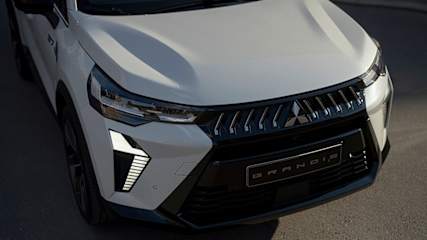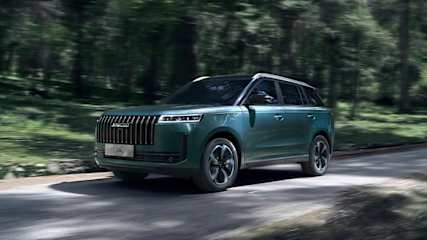'You can give as many sticks as you like, but we need carrots': Mitsubishi lashes out against tough new emissions standards as it stands by new combustion versions of 2026 Outlander, Triton, and ASX - relying on PHEVs as the 'considered' option
By Tom White · 10 Jul 2025
Mitsubishi's CEO, Shaun Westcott, explained the effect he thinks Australia’s tough new emissions laws will have on the new car market, and why Mitsubishi will continue to stick with its PHEV-heavy strategy.Westcott said there are still significant hurdles to overcome for electric cars despite the New Vehicle Efficiency Standard (NVES) coming into effect.“Just penalising us is not going to deliver the outcomes we need. The original thinking was that if you penalised us, we’d bring more EVs to the market.”“There’s no shortage of choice, what we lack is positive initiatives. You can give us as many sticks as you like, we need some carrots.”“The bigger challenge with adoption is that we need to have a government which considers the peculiarities of the Australian market. We’re not Norway. We’re not a small country. We don’t have cities that are 40 kilometres apart.”He said even with advancements in battery technology, which may result in vehicles able to travel between Sydney and Melbourne on a single charge, having infrastructure sufficient for the cities was an ongoing issue.“As we sit here today, Adelaide has 52 public fast chargers. 52 for a city of one and a half million people!”Westcott added if Mitsubishi’s number crunching was reflective of the wider market, price hikes could be headed for most brands as they try to keep up with the regulations which have effectively moved Australia from the emissions environment of the 1980s to the strict nature of Euro 6 overnight.He said despite the abundance of options, even at lower price points, Australian consumers still preferred combustion engines overall, which will cause a problem for many manufacturers, and soon.“I think the reality we’re looking at today is a lot of brands have dialled back their EV ambitions because they’ve realised that just bringing the cars to the market, you can fill your showroom with EVs but if nobody buys them you’d have to discount those cars to a point where they will be below the cost of production and that’s happening already just to get people to take them," said Westcott.“OEMs realise that to stay alive you have to sell cars - if Australians aren’t buying the EVs then we have to bring combustion and all the other powertrains to market and that will continue to happen despite the penalties because if the demand isn’t there, you haven’t got a business. It’s simple economics.“Every brand has to cover the cost of those penalties to survive and if customers are only buying single digit (percentages) of EVs - everyone is going to be copping penalties,” he said.Westcott still backs PHEVs in the short term.“We believe this is the correct transition technology. Our customers use their car in pure EV mode 83 per cent of the time," said Westcott.“ our customers have reduced emissions by 83 per cent right here, right now, today, with zero investment in infrastructure.“And if I wanted to do a trip to Melbourne, or Sydney, or across the Nullabor to Perth. It doesn’t matter, the car can do it.”Westcott was also blunt about how he sees the choice to remove the fringe benefits tax exemption, which (along with the original EV exemption) caused a spike in interest for PHEV models, was a political error when it comes to emissions reduction.“Stopping the FBT exemption on PHEVs was a mistake - Look what it did! PHEV Outlander was 20 - 25 per cent of the mix, it worked. It comes back to the carrots and the sticks. If we had a few more carrots it works. Lets do it.”It’s worth noting Mitsubishi has everything to gain by such changes. It currently doesn’t field a fully electric vehicle, with plans to bring in the eK X electric city car shelved after a brief local evaluation program.Plus, some manufacturers with diverse offerings in their line-ups have spoken out in favour of the NVES, as models they currently import from Europe or China already comply with even more stringent regimes in their respective home markets.Chinese manufacturers, meanwhile, are squeezing Mitsubishi on its plug-in hybrid home turf with unprecedented price-tags attached to incoming versions of the Chery Tiggo 7 and Tiggo 8 PHEV competing on price with combustion Outlanders and undercutting Mitsubishi’s Outlander PHEV by a significant margin.Mitsubishi isn’t alone though. Japanese manufacturers seem to be in particular trouble, as they struggle to adjust to a regulatory environment much more hostile to their historically popular nameplates. Subaru, Isuzu, Mazda, and to some extent, even Toyota will have work to do in the coming years if they want to avoid painful fines under the new laws.
 copy.jpg)
.jpg)
.jpg)
.jpg)
.jpg)
.jpg)



.jpg)